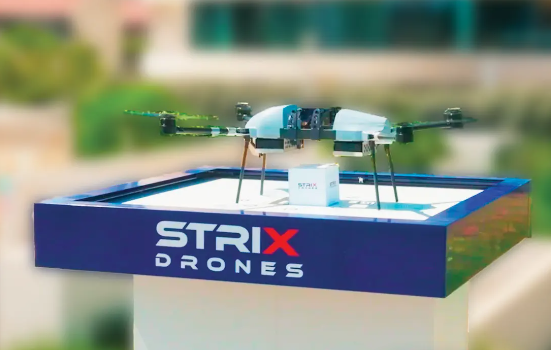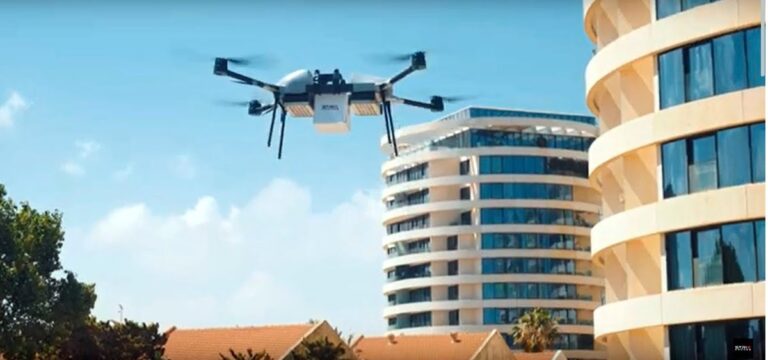The War in Ukraine is Drone Intensive
Reuters have recently reported about the huge impact Drone have on modern warfare and specifically in the ongoing war in the Ukraine. On the Ukrainian battlefield, with almost every fighting brigade now equipped with assault drone companies. Additionally, most units have access to small reconnaissance drones for intelligence gathering and surveillance purposes. The scale of drone deployment is indeed massive, with Ukraine reportedly losing around 10,000 drones per month, highlighting both the intensity of their use and the ongoing attrition in this aspect of warfare
A wide variety of drone systems are being utilized, ranging from tiny quadcopters to large fixed-wing aircraft:
Surveillance & Electronic Warfare Drones
- Small commercial drones like DJI Mavics for short-range reconnaissance
- Larger winged drones for long-range surveillance
Attack Drones
- Armed drones like the Turkish Bayraktar TB2 for strikes
- Kamikaze drones/loitering munitions for one-way attack missions
- Maritime drones for naval attacks
———————————————————————————————————————–
Read the full Reuters article here: https://www.reuters.com/graphics/UKRAINE-CRISIS/DRONES/dwpkeyjwkpm/
———————————————————————————————————————–
China Is Changing It’s Policy
The use of DJI and other Chinese Drones in the battel field has prompt China to take action, consequently, China has recently implemented significant changes to its export control measures for unmanned aerial vehicles (UAVs) and related components, addressing the widespread use of Chinese-made drones in conflict zones. These adjustments aim to balance national security concerns with the country’s dominant position in the global drone market.
These restrictions are added to the the restrictions already imposed on high-precision inertial-measurement equipment.
Furthermore, the adjustment prohibits the export of all civilian drones that are not subject to export controls but are for use in the proliferation of weapons of mass destruction, terrorist activities or military purposes.
Read the PR here: https://english.www.gov.cn/news/202407/31/content_WS66aa3b06c6d0868f4e8e9a14.html
Why is This Announcement Dramatic?
China’s dominance in both raw materials and drone manufacturing creates a potential bottleneck in the global UAV supply chain. This situation could lead to significant consequences for the drone industry and its users worldwide.
- Raw Materials – China is a major source of rare earth elements and other critical materials used in drone production.
- Processed Materials – Chinese companies play a crucial role in refining and processing these raw materials into usable components.
- Components – Many essential drone parts, including motors, batteries, and sensors, are predominantly manufactured in China.
- Complete UAVs – Chinese companies, such as DJI, dominate the global consumer and commercial drone markets.

Source: Office of the European Union, Luxembourg, 2019, ISBN 978-92-76-12194-7, doi:10.2760/253871, JRC118394
Of the 48 raw materials, 23 are flagged as critical in the EU economy, namely Co, Si, C (natural graphite), Mg, V, Sb, Bi, REE, Pt, Pd, B, In, Ga, Rh, Ru, Fluorspar, P, W, Ta, Nb, Be, Sc and Hf. China is shown to be the major supplier of CRMs for drones, delivering more than 40 % of CRMs, followed by South Africa (10%) and Russia (8%).
China has strategically expanded its influence in Africa and Latin America, focusing on securing access to critical raw materials essential for high-tech industries. This approach has significant implications for global supply chains in electronics, optics, batteries, and composite materials.
A better view of the list of Raw Materials for the Drone industry can also be seen here:

Reusing Drones for Short & Long-Range Reconnaissance
Given the risks of supply shortage in Drones and the ability of Chinese, Russian and South African suppliers to place a sudden embargo over Critical Raw Materials, Components and / or the export of complete UAV systems, Strix Drones is advocating for Armies to seriously consider moving their reconnaissance operations into a more scalable and economic solution that involves using larger and more robust EU and USA manufactured drone types accompanied in with Universal Drone Docking Stations.
Universal Drone Docking Stations are revolutionizing mobile field operations, offering a comprehensive solution for drone deployment and maintenance. These advanced systems provide multiple benefits that enhance the efficiency and effectiveness of drone operations in remote and challenging environments.
Moreover, advanced Drones and Docking stations can also work in semi and full-autonomy modes from remote locations and thus provide real-time reconnaissance information to front line forces as well as to regional HQ locations via secure data links.
Conclusions
Modern warfare by drones is an undisputable fact, over the last 30 months of ware, millions of Drones were used for Reconnaissance and Striking near and far targets. The economic impact of using so many drones has highlighted the need to secure supply chains and the issue of Raw Material, Components and export of completed Drones has become a prominent given the China, Russia and South Africa control a great deal of such materials.
Solutions such as Universal Drone Docking Stations can provide a partial solution for Reconnaissance applications both for short-range and long range missions such as border patrol.

About Strix Drones Ltd. – Solutions for Aerial Reconnaissance
Strix Drones offers solutions that can be highly beneficial for area inspection in prisons, leveraging their advanced drone docking technology and autonomous systems.
- Universal Drone Docking Stations: Strix Drones provides universal and autonomous docking stations that can integrate with any drone, allowing for continuous operations without manual intervention. This is particularly useful for prisons, where drones can be used to conduct regular surveillance and inspections around the perimeter and within the facility itself. The docking stations enable drones to land, recharge, and download data autonomously, ensuring they are always ready for deployment.
- Automated Inspection Capabilities: The Strix Drones technology supports automated inspection processes, which can enhance security in prisons by providing real-time monitoring and rapid response capabilities. Drones equipped with cameras and sensors can patrol the prison grounds, detect unusual activities, and provide live feeds to security personnel.
- Secure and Efficient Operations: The docking stations are designed to provide secure storage and rapid data offload, which is crucial for maintaining the integrity of surveillance operations in a prison environment. The systems are weather-protected and offer centralized management, making them suitable for the demanding conditions of prison security.
- Military-Grade Reliability: Strix Drones’ solutions are battle-tested and have proven reliability in challenging environments. This robustness ensures that the technology can withstand the rigorous demands of prison security operations, providing a dependable tool for maintaining safety and order.






